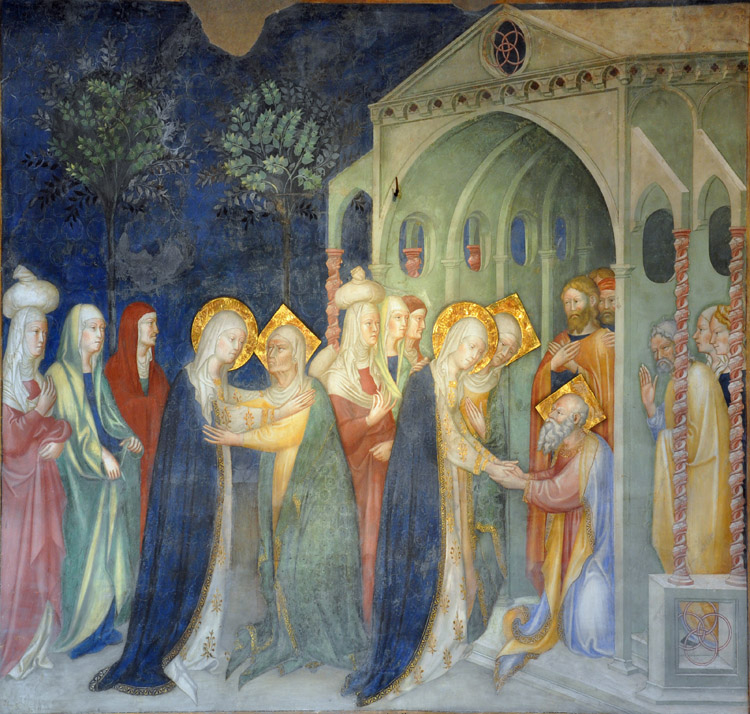THE SETTING
The setting varies but is almost never inside Elizabeth's house (see one very late exception). It may be at the entrance, following the Protevangelium's statement that Elizabeth "ran to the door" (¶12) when Mary knocked. The house is often made to look somewhat like a church or temple, as in the first and second pictures at right. In the picture above, the flying buttresses and ribbed vaulting that characterize Gothic churches of the day have been added to an otherwise normal home.Alternatively, to represent the "city of Judah in the mountains" this stained glass pictures Elizabeth's city as a castle atop a tall mountain. Or the size implied by the word "city" may be reflected by putting the women outside the gates of a large walled city, as in (this example). The idea of an outdoor setting gave Renaissance artists a chance to indulge in a bit of landscape painting (example). Carpaccio's The Visitation is a vast cityscape with diminutive figures of Mary and Elizabeth set in the foreground.
THE PARTICIPANTS
Sometimes Mary and Elizabeth are the only persons in the composition, or in the case of city-gates settings there may be just one distant figure entering or leaving at the gate. But many Visitations add other characters. Quite a few in the late Middle Ages are like the picture above, where Mary arrives in the company of other young women. In the apocryphal gospels Mary leaves the Temple after Joseph is chosen as her spouse-to-be. The priests assign some Temple virgins to accompany her to the home where she will be awaiting Joseph.1 It is likely that these are the companions in the medieval Visitations.In a few cases Mary is accompanied by what appears to be a female servant carrying a sack, as in the third picture at right. In the fourth picture the sack becomes a satchel.
In that fourth picture we also see a young girl standing at the city gate, a figure with precedents going back to early Christian times. In the first picture at right, a mosaic of the 6th-century, a boy pulls back a curtain with a gesture of contemplation. In the second picture, from the 12th century, he looks out from a window. And in the third it is a young woman who looks out, drawing back a curtain as in the first picture.
And of course we sometimes see Elizabeth's husband Zechariah, as above and in this example.
THE MONTHS
In Luke the angel tells Mary that Elizabeth is six months pregnant, and Mary stays with her for three months. Adding in the time for travel to Judah, we might calculate that Mary was there for the birth of John the Baptist, and indeed the Golden Legend tells us that she stayed in the city "for three months until John was born, and lifted him from the earth with her own hands" (Ryan I, 200).2 This is pictured in Salimbeni's cycle on the life of John the Baptist, as is Mary's departure.
Prepared in 2015 by Richard Stracke, Emeritus Professor of English, Augusta University. Revised 2021-11-23.
NEXT:
PART FOUR, THE PRESENTATION IN THE TEMPLE
ALSO SEE PARTS:
1
2
4
5
6
7
8
Lorenzo and Jacopo Salimbeni, The Life of John the Baptist: "The Visitation," 1416. See the description page.
OTHER IMAGES
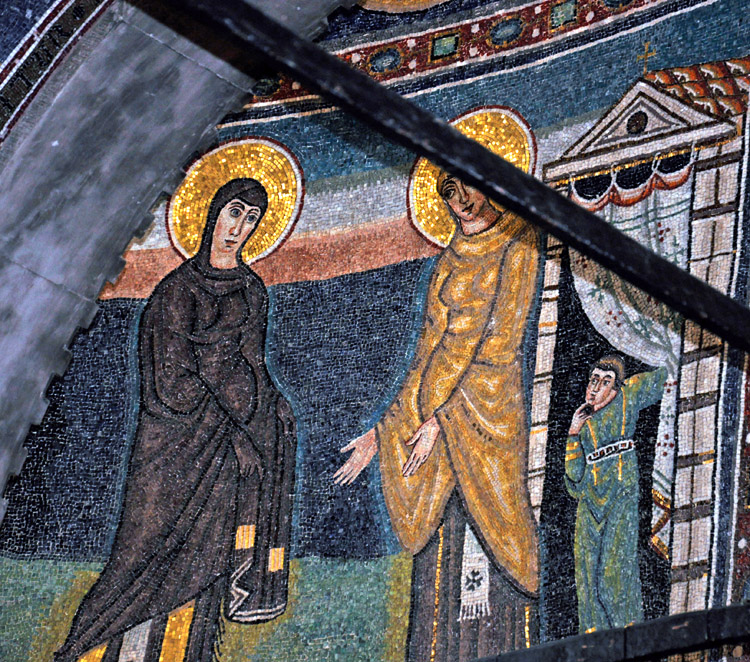
Visitation mosaic in Poreč Cathedral, circa 540 A.D. – See the description page
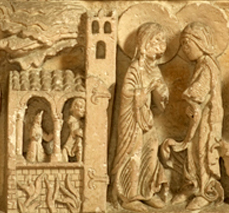
A 12th-century Visitation picturing the house as a Romanesque church. A boy peeks out from one of the windows. – See the description page.
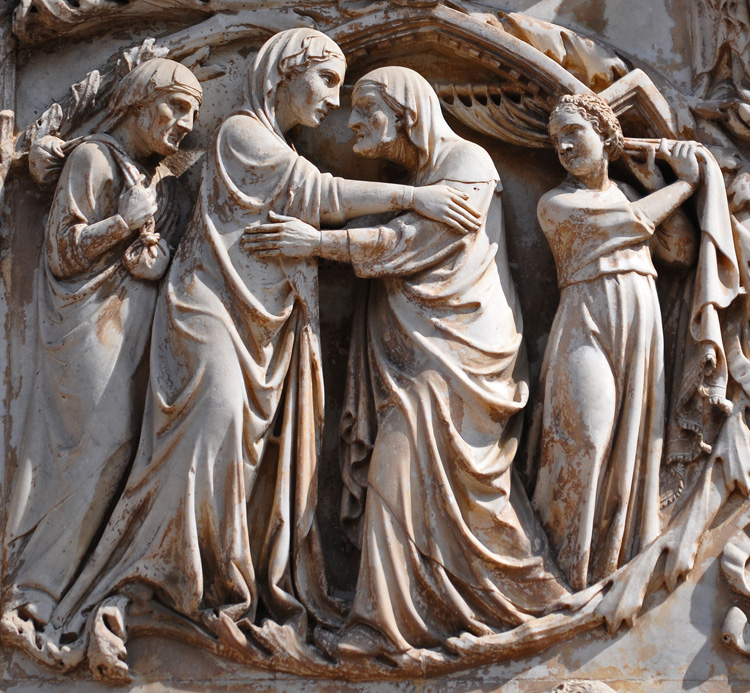
Relief at Orvieto Cathedral – See description page.
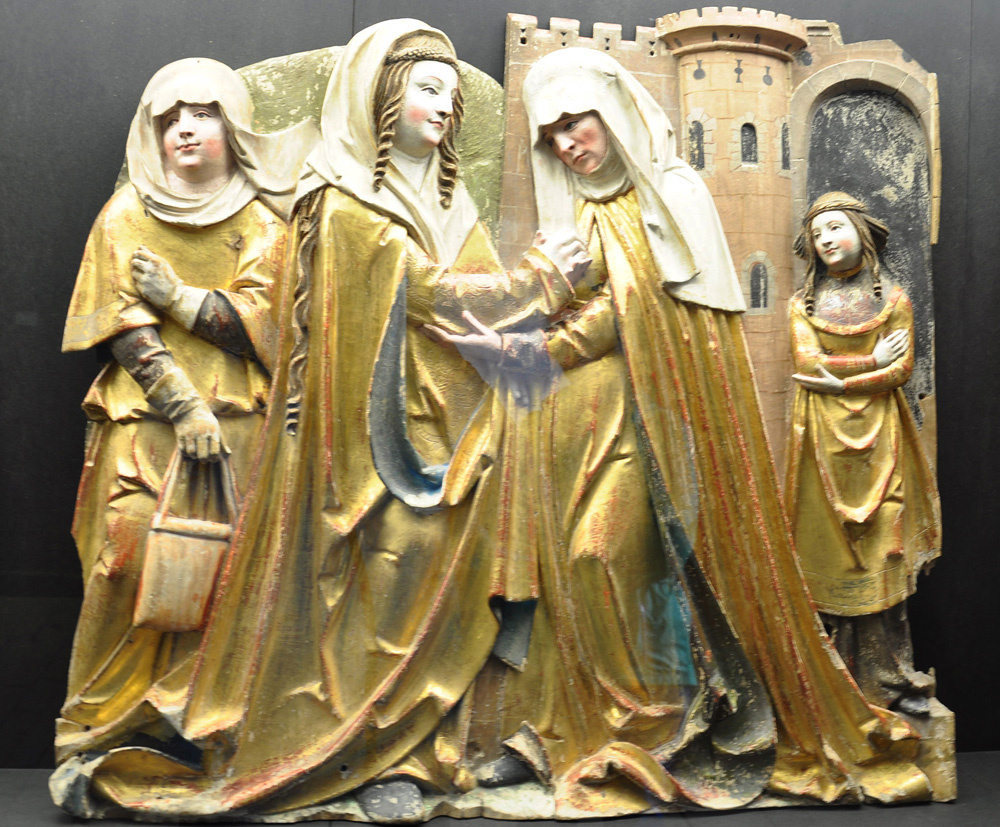
Small sculpture group from a Swiss convent, possibly 17th century – See the description page.
MORE IMAGES
- 1325-70: Panel 1, window 3 in Regensburg Cathedral's Life of Mary Windows
- 15th century (?): A fresco in Leboreiro, Spain, has two panels picturing the tortures of Jesus and St. Sebastian plus one whose subject appears to be the Visitation.
- 1489-91: Fresco of the Visitation in Santa Maria del Popolo.
FURTHER READING
NOTES
1 The Gospel of Pseudo-Matthew, ¶8. The Gospel of the Nativity of Mary, ¶8.
2 Protevangelium ¶12 also mentions the three months of Mary's stay but does not mention her attending at John's birth.
